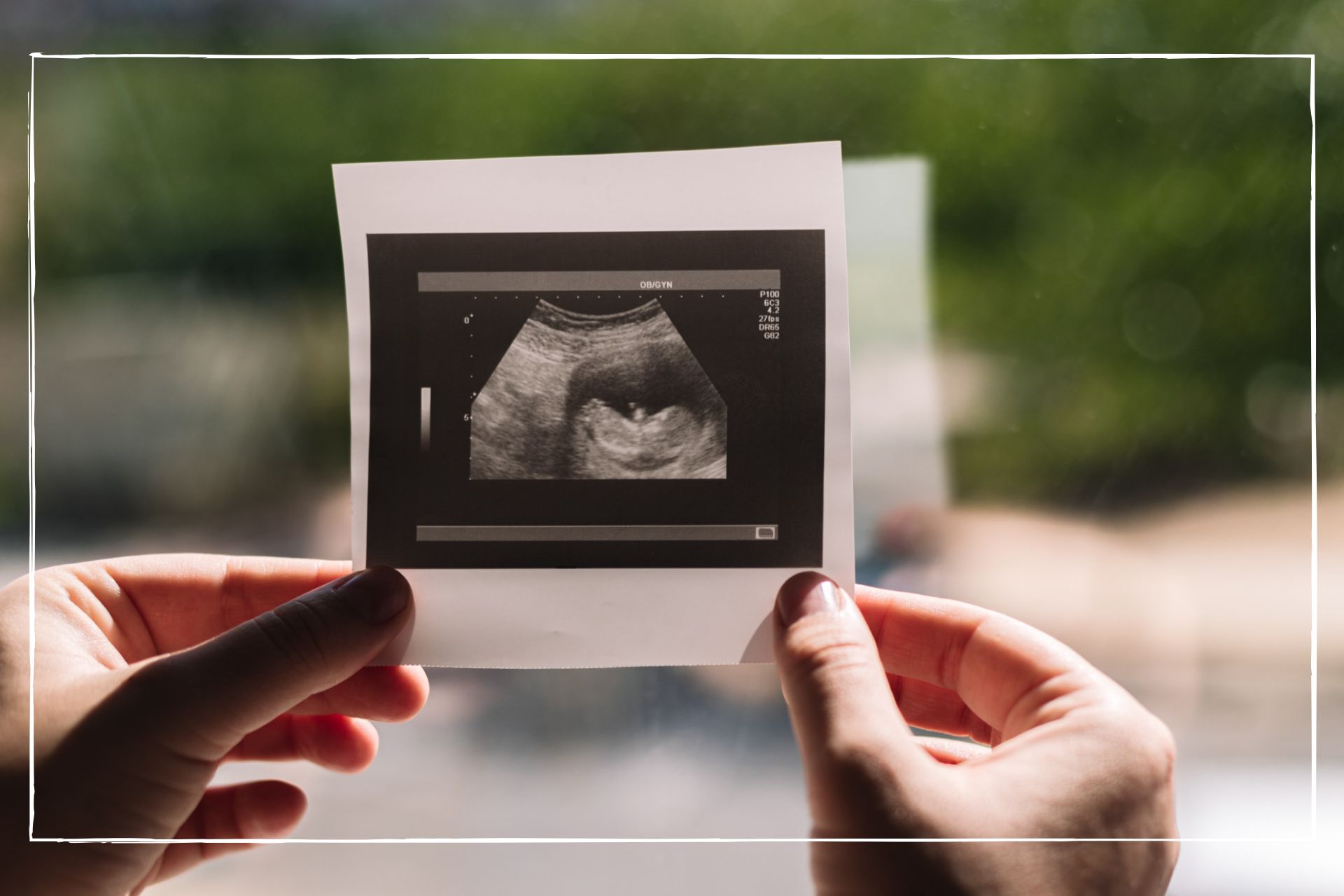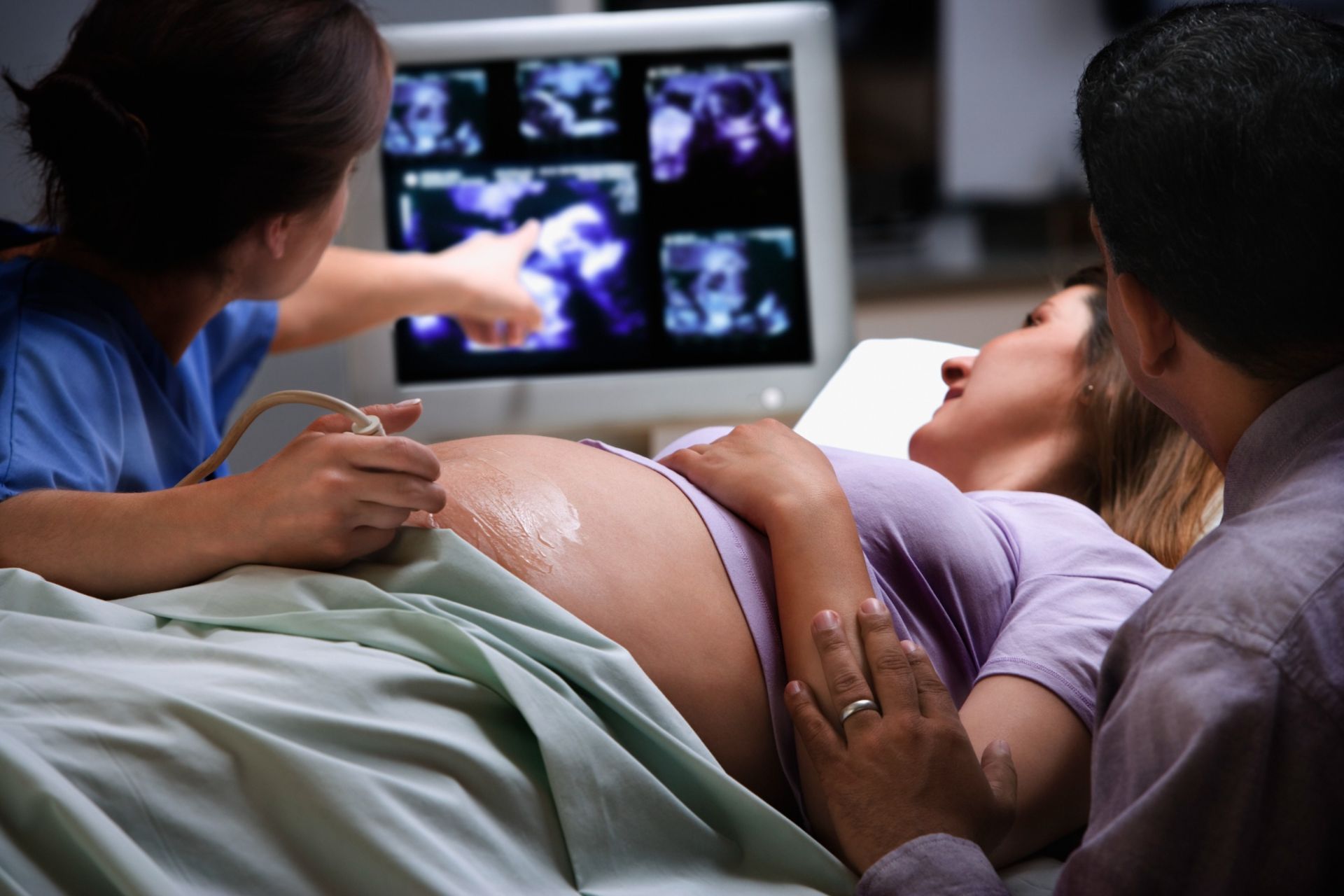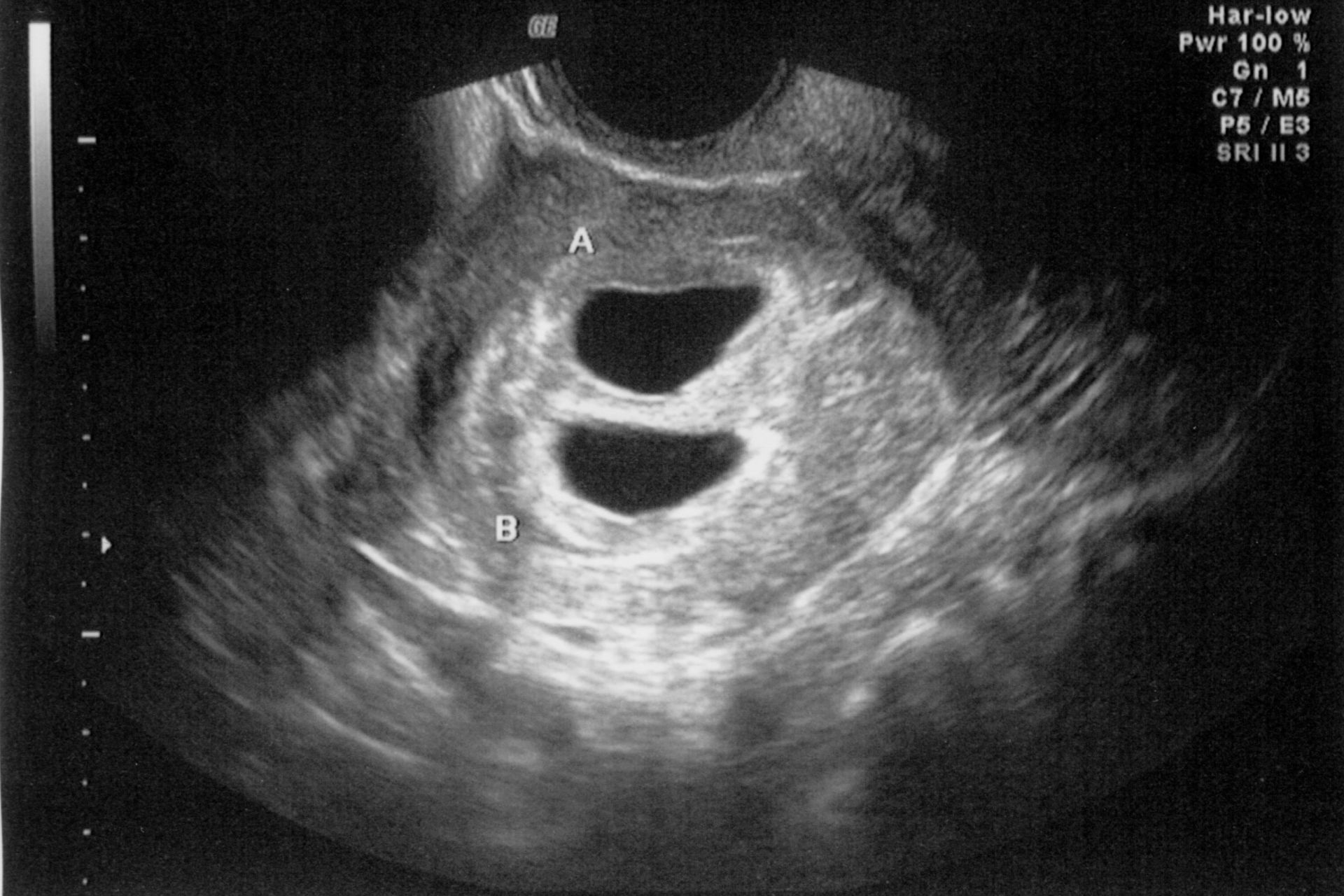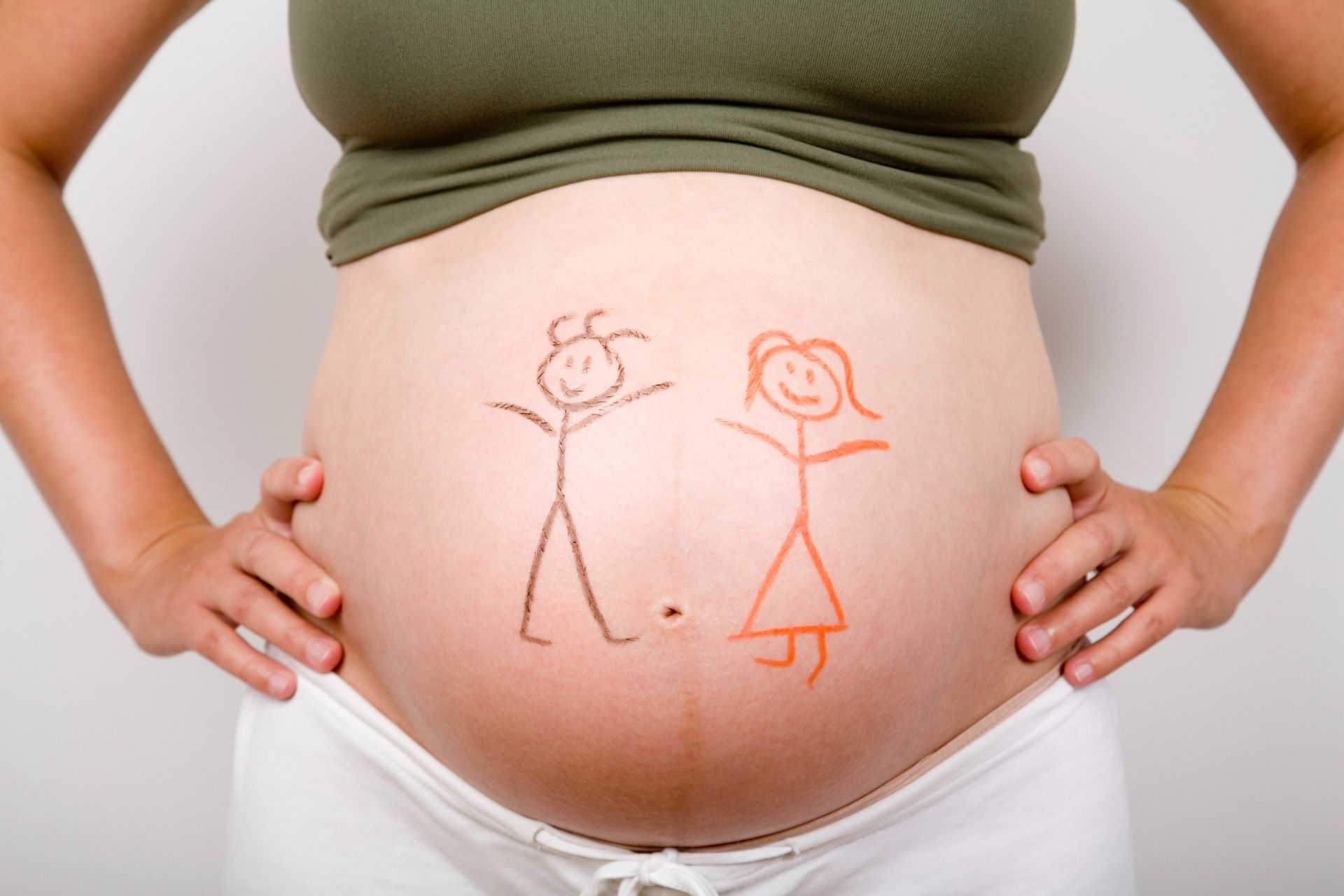Ramzi Theory: How to predict your baby's gender at just 6 weeks gestation
The Ramzi Theory may mean you no longer have to wait 20 weeks to find out your baby's sex ...

Amanda Bastianelli
The Ramzi Theory suggests that the gender of a foetus can be predicted as early as 6 weeks pregnant, meaning you might not have to wait for your 20 week scan to find out if you're having a boy or girl.
The theory can be over 97% accurate. However, there's a catch. Like the popular Nub Theory, you need a pregnancy ultrasound photo to try the Ramzi Theory, however the scan needs to be taken before you are nine weeks pregnant. This is because the Ramzi Theory uses the placement of the placenta to help predict your baby's gender and if you're past nine weeks it is considered too late to use it, as it is impossible to tell where the placenta originally implanted.
"The Ramzi Theory is a playful guess, a bit of fun," Amanda Bastianelli, specialist Midwife and sonographer tells us. "Its not looking at the baby itself - they look like little prawns - they’re about 15mm before 11 weeks. Instead, it focuses on which side of the image the placenta is forming."
The NHS rarely offers an ultrasound scan before 8-12 weeks pregnant, however, some people choose to pay privately for a viability scan that can be done between 6 and 10 weeks to check whether a pregnancy is developing normally. But, if you do get a scan photo early on, here's how you maybe able to predict your baby's gender as early as 6 weeks gestation using the Ramzi Theory.
What is the Ramzi Theory?
Also known as Ramzi's method, the Ramzi Theory claims to be able to determine if your baby is a boy or girl by as early as six weeks, instead of the usual 20 weeks, using a 2D ultrasound picture to see which side the placenta is on.
Amanda explains; "If the placenta is on the right side, then you are believed to be having a boy. But if the placenta is on the left then there is a high likelihood that the child will be a girl."
People first started talking about the Ramzi Theory after a Dr Saad Ramzi Ismail's study, was published online on Obgyn.net.com, a US website run by medical company MJH Life Sciences, in 2011.
Parenting advice, hot topics, best buys and family finance tips delivered straight to your inbox.
How does the Ramzi Theory work?
The key is to look for a bright area around the sac, the large cavity of fluid surrounding the embryo, where the placenta is going to start growing. Ideally you need a medical professional who is familiar with the Ramzi Theory to help interpret the scan results for you.
"In early pregnancy, so before 11 weeks, there are changes that happen quickly - one of which is the development of the placenta. Up to 9 weeks there is no placenta. But our bodies will send out arteries and these will be embedding a pregnancy sac into the uterus, sending blood flow through, so on an ultrasound image a clinician will see a denser area." Amanda says.

Your doctor may be able to help by pointing out the placenta for you.
According to the theory, if your placenta has implanted on the left side of your body, there is a 97.5% chance you are having a girl. If your placenta is on the right side of your body, there is a 97.2% chance you are having a boy.
However, not all scans are performed the same and the positioning of the placenta will depend on whether it is an abdominal or transvaginal scan. Images may be 'flipped' or 'mirrored' if it is an abdominal scan, meaning the left side is actually the right. But if it is a transvaginal scan then the placenta will appear on the 'same side'.
Amanda warns that even if you pay for a scan, many qualified clinicians wouldn't make a gender prediction based on this. "All medical professionals are regulated by the CQC (Care Quality Commission) and, whether you pay or not, all scans are for diagnostic reasons. Health professionals are conscious as to the ethical side of things and there are occasionally people who might make a decision based on a gender."
She goes on to add; "For all registered professionals it would be against code of practice to make a guess in early pregnancy if it potentially meant ethical choices. Though they would happily share a print of your scan for you to have a playful guess at home."
When doesn't the Ramzi Theory work?
It can be much more difficult to determine the position of the placenta if you're carrying twins or multiple foetuses. In these cases, the results may not be accurate.
It also depends very much on how each baby develops in the womb, which varies between woman to woman.
"Each expectant mother carries their baby differently, and baby development happens at a different speed, therefore images may not be accurate," says Eliza Flynn from Biamother.
"For example, the development of a baby at 8 weeks and 3 days, could actually be the same as another baby at 7 weeks, 6 days, so it is hard to make an accurate prediction."

In this ultrasound of a twin pregnancy at approximately four weeks gestation, it's difficult to determine the position of the placenta in the picture.
How accurate is The Ramzi Theory?
Overall, the Ramzi Theory is not thought to be that accurate. Some claim that the method is as much as 97% reliable. People who are in favour of the Ramzi Theory, regularly refer to this study which involved a number of ultrasounds. However, that study has not undergone peer review, and Dr. Saam Ramzi Ismail, who put his name to the theory, did not publish his research in a peer-reviewed journal, which would have left it open to scrutiny from doctors or scientists with expertise in this area to check it for its methodology, quality, and accuracy.
In addition, we also found out that Dr Ramzi isn't a qualified doctor. An interview on lifestyle blog, bottlesoup, claims he has a PhD in Public Health and a master's degree in medical ultrasounds.
While no major medical organization recognises the theory as valid, a 2010 study Trusted Source in a peer-reviewed journal also disputed the theory that placental location correlates with sex.
Eliza agrees, saying that it really is just a 50/50 chance of an accurate prediction; "The main theory is dependent on which side your placenta is on; if the placenta is on your right, it is a girl, and if it is on the left, it’s a boy. However, there is no scientific evidence to back this up and it is highly unlikely that this theory has any validity."
Methods to try other than Ramzi Theory
You could still use other methods to try and work out if you're carrying a baby boy or a baby girl before your 20 week scan.
The Skull Theory can be tried once you have your 12 weeks scan, or if you develop a natural line on your stomach during your pregnancy (known as the Linea Nigra) then this is also apparently a good indicator if you might have a boy or girl.

There are supposedly other ways to find out what gender your baby will be but the best is an ultrasound from 16 weeks on.
If you don't have a scan photo in the early weeks of your pregnancy, you can still try and predict your baby's gender using astrology and the ancient Chinese Birth Chart, or there are also a ton of old wives' tales about pregnancy that can help you guess if you're carrying a boy or a girl.
Amanda adds: "Gender forms 16 weeks onwards - the nub will have gone in if it's a girl and out if it's a boy. On ultrasound, the sonographer would look for the ‘potty shot’ so you can see genitals clearly. This option would be of gender prediction 99.9% accurate."
Who is Ramzi Theory named after?
Dr. Saam Ramzi Ismail developed the Ramzi Theory after conducting a controlled study of over 5,000 pregnant women. In this study, he was looking at the direction or orientation of the chorionic villi - the hairlike formations that become the placenta - as an accurate marker in determining the gender of the baby.
While many parents use the Ramzi Theory there has been no peer-reviewed research or evidence to back up Dr Ismail's claims.
Related features:
Video of the Week:

Former NHS and Award-winning specialist midwife and sonographer, Amanda trained in Midwifery at University of Greenwich and then went on to complete her PGC in Medical Imaging, Obstetrics & Gynaecology.
Stephanie has been a journalist since 2008, she is a true dynamo in the world of women's lifestyle and family content. From child development and psychology to delicious recipes, interior inspiration, and fun-packed kids' activities, she covers it all with flair. Whether it's the emotional journey of matrescence, the mental juggling act of being the default parent, or breaking the cycle of parenting patterns, Stephanie knows it inside out backed by her studies in child psychology. Stephanie lives in Kent with her husband and son, Ted. Just keeping on top of school emails/fundraisers/non-uniform days/packed lunches is her second full-time job.
- Amanda BastianelliSpecialist Midwife and sonographer